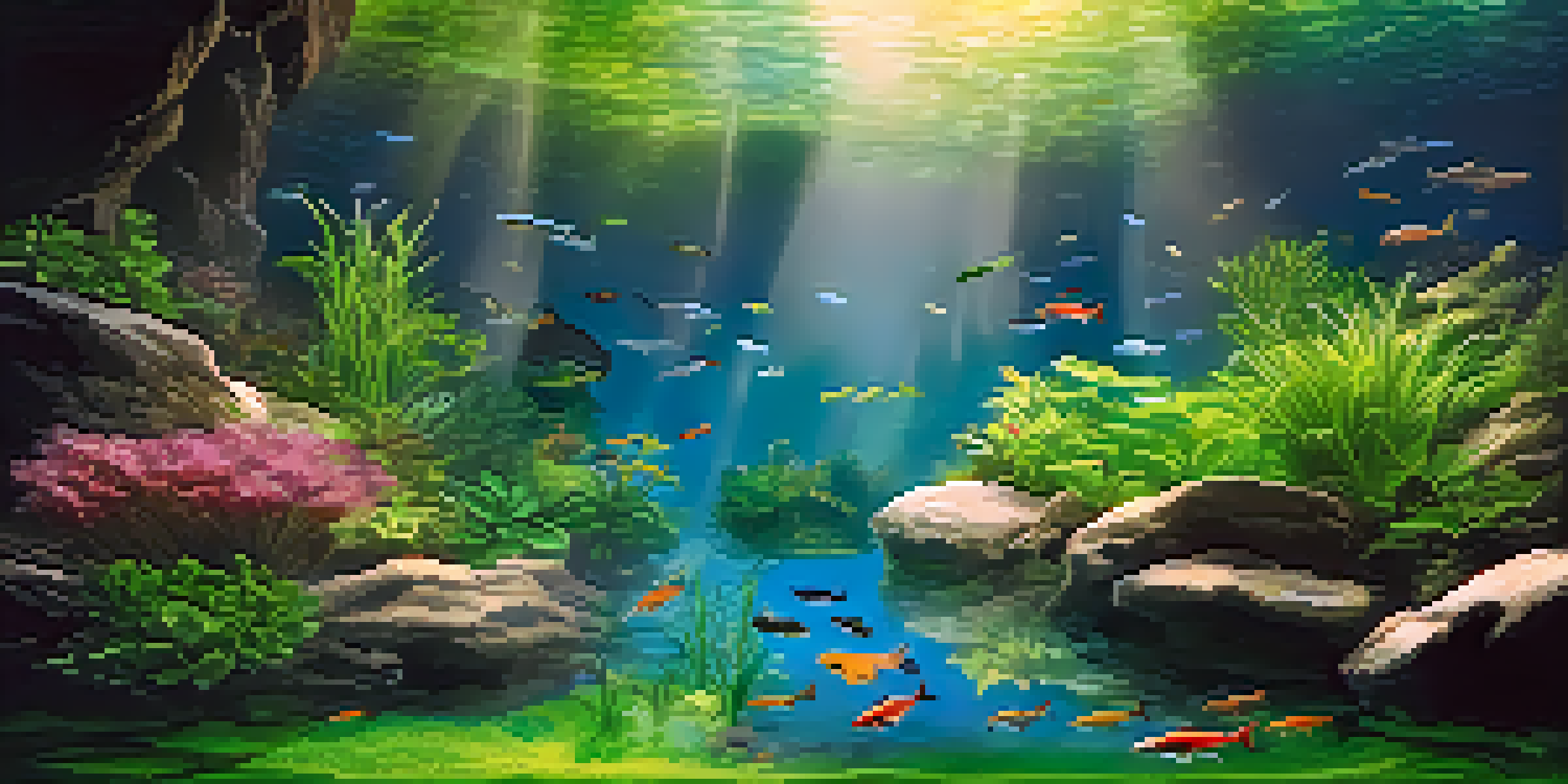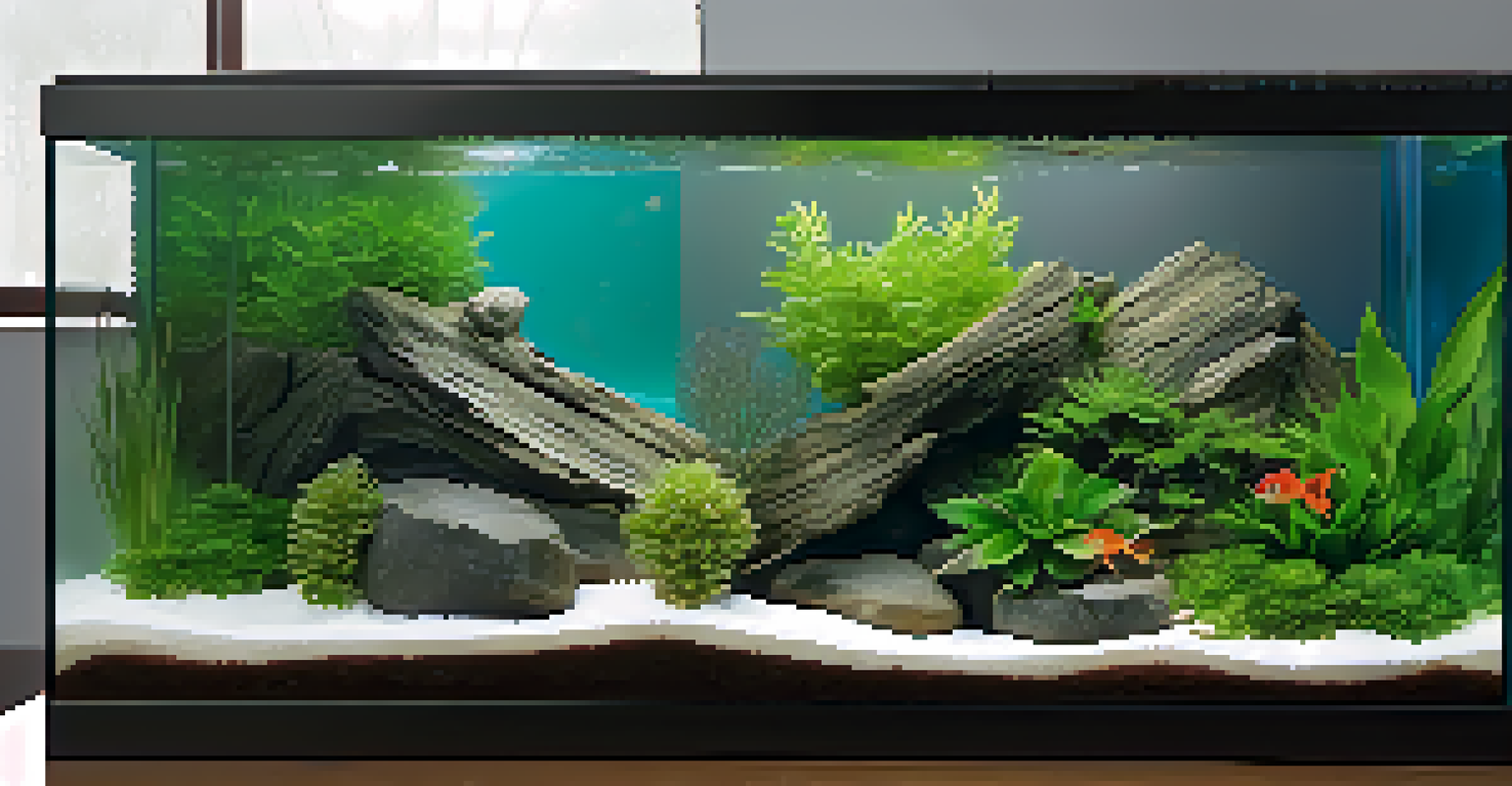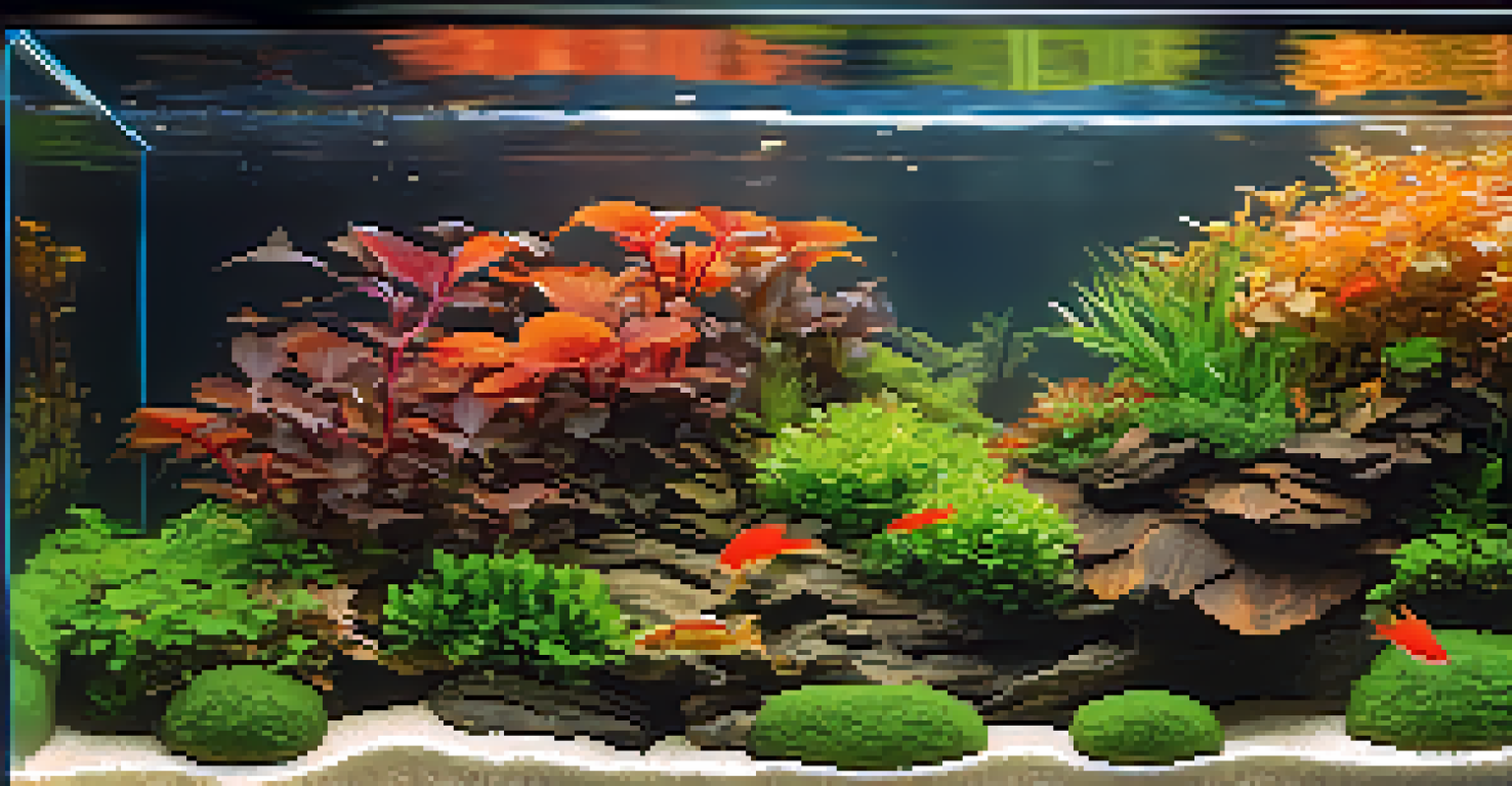Seasonal Changes in Aquascaping: Adapting Your Design

Understanding Seasonal Changes in Aquascaping
Aquascaping, the art of creating underwater landscapes, is heavily influenced by the seasons. Just like nature, your aquascape can thrive or struggle depending on the time of year. Recognizing these seasonal shifts can help you maintain a vibrant and healthy aquarium environment.
Aquascaping is a reflection of nature, and nature is always in flux.
In spring, for example, you might notice your plants growing more rapidly due to increased sunlight and warmer temperatures. Conversely, summer can bring challenges such as algae blooms. By understanding these seasonal dynamics, you can make informed decisions to enhance your design.
As we transition into autumn and winter, the conditions change again, impacting everything from plant growth to fish behavior. By adapting your aquascape to these seasonal changes, you can ensure a flourishing underwater ecosystem year-round.
Spring: Revitalizing Your Aquascape
Spring is a time of renewal, making it the perfect season to rejuvenate your aquascape. As temperatures rise and sunlight increases, many aquatic plants enter their growth phase. This is an excellent opportunity to trim overgrown plants and introduce new species that thrive in the warmer conditions.

Consider adding colorful, fast-growing plants like ludwigia or water sprite during this season. These plants not only enhance the visual appeal but also improve water quality by absorbing excess nutrients. Regular maintenance during spring can prevent algae overgrowth and promote a healthy ecosystem.
Seasonal Changes Impact Aquascaping
Understanding seasonal dynamics can help you maintain a vibrant and healthy aquarium environment.
Additionally, monitor your water parameters closely, as spring can bring fluctuations in temperature. Making gradual adjustments ensures that your aquatic life remains happy and healthy, setting the tone for a vibrant aquascape throughout the warmer months.
Summer: Managing Heat and Algae
Summer can be a double-edged sword for aquascapers. While your plants may thrive with the extra sunlight, the heat can also lead to increased algae growth, which can cloud your aquatic paradise. Managing temperature and light exposure is key to a successful summer aquascape.
The beauty of an aquarium lies in its balance, and balance is achieved through understanding the seasons.
To combat the effects of heat, consider using shading techniques, such as floating plants or strategically placed decorations. This will help keep your water temperature stable and reduce algae proliferation. Regular water changes are also crucial during this time to maintain water quality.
Don't forget to keep an eye on your fish and invertebrates, as they can also be affected by rising temperatures. By adapting your aquascaping techniques in summer, you can enjoy a lush, thriving underwater world without the unwanted green invaders.
Autumn: Preparing for the Transition
As summer fades, autumn brings a shift in the aquascaping landscape. This transitional season is the perfect time to evaluate your setup and prepare for the cooler months ahead. You may notice changes in plant growth, and some species may even begin to shed leaves.
Consider planting fall-specific species that can withstand cooler temperatures. Plants like anubias or crypts are hardy choices that can offer beautiful colors as leaves change. It’s also a good time to remove any dead or dying plants to maintain a clean and aesthetically pleasing aquascape.
Select Plants for Seasonal Success
Choosing the right plants for each season enhances your aquascape's beauty and health.
Moreover, autumn is an excellent opportunity to reassess your fish and invertebrate populations. Ensuring that your aquatic life is compatible with the upcoming colder temperatures will help you avoid any surprises as winter approaches.
Winter: Embracing Minimalism
Winter often calls for a shift in aquascaping philosophy, leaning into a more minimalist design. With reduced light and cooler temperatures, many plants slow down their growth, making it a perfect time to simplify your layout. This not only reduces maintenance but can also create a tranquil winter scene.
Consider using hardy plants and fewer decorations to allow for easier care. This minimalist approach can highlight the beauty of your remaining plants and create a serene atmosphere. Adding a few strategically placed stones or driftwood can enhance the aesthetic without overwhelming the space.
Keep an eye on your water parameters, as winter can bring fluctuations in temperature. Regular monitoring and adjustments will help ensure your aquatic life remains healthy and comfortable throughout the colder months.
Seasonal Plant Selection for Aquascaping
Choosing the right plants for each season can significantly enhance your aquascape's beauty and health. In spring, opt for fast-growing species that can flourish in warmer temperatures. Plants like hornwort and water wisteria can create lush greenery that invigorates your underwater landscape.
For summer, select heat-tolerant plants such as java fern or amazon swords that can withstand higher temperatures. These species not only thrive but also help maintain water quality by providing shade and oxygen. Choosing the right plants can mitigate the risk of algae blooms during this period.
Adapt Fish Care with the Seasons
Adjusting fish and invertebrate care based on seasonal changes ensures a balanced and thriving ecosystem.
As autumn approaches, consider species like crypts and anubias, which can handle cooler water. In winter, focus on hardy plants that require less maintenance. By adapting your plant selections seasonally, you can support a vibrant and resilient aquascape throughout the year.
Fish and Invertebrate Care Through the Seasons
Just like plants, your fish and invertebrates require different care depending on the season. In spring, as the water warms, it’s an ideal time to introduce new fish or invertebrates that thrive in these conditions. Monitor their health closely, as they may be more active during this time.
In summer, ensure your aquatic life is comfortable by providing hiding spots and shaded areas. This can help your fish manage the heat and reduce stress. Additionally, keep feeding schedules consistent, as some species may have varying appetites in warmer temperatures.

As you transition into autumn and winter, be mindful of your fish's breeding cycles and feeding needs. Adjusting their diet and environment according to the season can enhance their health and well-being, ensuring a balanced and thriving aquarium ecosystem year-round.
Tips for Seasonal Aquascaping Success
To achieve success in seasonal aquascaping, it’s crucial to remain flexible and observant. Keep a journal of your observations regarding plant growth, water parameters, and fish behavior throughout the year. This will help you identify patterns and make informed adjustments each season.
Utilize seasonal decorations to enhance the beauty of your aquascape while reflecting the changing environment. Incorporating natural elements like seasonal leaves or twigs can create a striking visual that resonates with the outside world.
Lastly, don't hesitate to seek advice from fellow aquascapers or local aquarium clubs. Sharing experiences and tips can provide valuable insights and inspire new ideas, ensuring that your aquascaping journey remains engaging and rewarding.